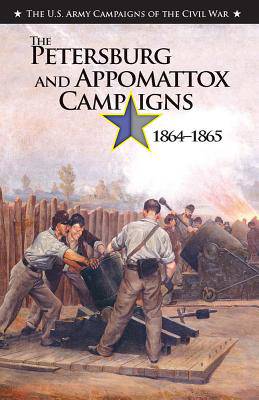
- Retrait gratuit dans votre magasin Club
- 7.000.000 titres dans notre catalogue
- Payer en toute sécurité
- Toujours un magasin près de chez vous
- Retrait gratuit dans votre magasin Club
- 7.000.0000 titres dans notre catalogue
- Payer en toute sécurité
- Toujours un magasin près de chez vous
Description
In the Civil War's last year, two great adversaries squared off in central Virginia in a series of battles that eventually determined the struggle's outcome. After a month of battles from the Wilderness to Cold Harbor in May and June, 1864, Union Commander in Chief Lt. Gen. Ulysses S. Grant was frustrated in his headstrong attempts to batter the Confederate forces under General Robert E. Lee and bring them to open battle. Seeking to sidestep Lee's army and attack Richmond, the Confederacy's capital city, Grant moved south to cross the James River and cut the rebel army's supply lines at Petersburg, Virginia, where several key railroads met to form a crucial logistical center. Lee, however, reacted in time to block the Union strike at Petersburg. A ten month siege ensued as Grant sought to pry Lee out of Petersburg with flanking maneuvers, and the Confederates desperately defended the city and Richmond. Lee's lines finally collapsed on 2 April 1865 after a powerful Federal attack on his right, which forced the rebels to evacuate Richmond and Petersburg that night. In a seven day retreat, with Grant's Union forces closely behind them, the Confederates marched west to obtain supplies and join other rebel troops in North Carolina. Grant's forces, particularly the cavalrymen under Maj. Gen. Phil Sheridan, were able to get in front of Lee's column and block his progress at a small court house village called Appomattox. With no chance of victory or even escape left to him, Lee surrendered his forces to Grant on 9 April 1865.
Middle school, through academic level students pursuing coursework about the U.S. Civil War in American History classes may find this book useful as a supplemnetal reading text or for research papers and essays about this topic. Additionally, military personnel, strategists, military historians, history teachers and professors, Americian citizens and others interested in the U.S. Civil War may find this historical reference work engaging.
Middle school, high school, academic, and public libraries news corporations, as well as Federal/State/Municipal Government libraries may want to include this work in their reference collections about U.S. History.
"
Middle school, through academic level students pursuing coursework about the U.S. Civil War in American History classes may find this book useful as a supplemnetal reading text or for research papers and essays about this topic. Additionally, military personnel, strategists, military historians, history teachers and professors, Americian citizens and others interested in the U.S. Civil War may find this historical reference work engaging.
Middle school, high school, academic, and public libraries news corporations, as well as Federal/State/Municipal Government libraries may want to include this work in their reference collections about U.S. History.
"
Spécifications
Parties prenantes
- Auteur(s) :
- Editeur:
Contenu
- Nombre de pages :
- 69
- Langue:
- Anglais
- Collection :
Caractéristiques
- EAN:
- 9780160927584
- Date de parution :
- 16-04-16
- Format:
- Livre broché
- Format numérique:
- Trade paperback (VS)

Les avis
Nous publions uniquement les avis qui respectent les conditions requises. Consultez nos conditions pour les avis.






